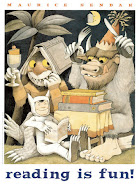
The Wee Free Men: Tiffany is my favourite Terry Pratchett character (my husband the Rincewind fan is not that keen on her); and this is an excellent variant on the getting-back-your-stolen-sibling-from-fairyland plot. So excellent in fact, that you can read the whole book twice before realising the plot is actually familiar. Tiffany's conversation with Miss Tick is a delight, and so are the Nac Mac Feegles. Even in a YA book Pratchett can make you see the world differently.
Bad Girls by Cynthia Voigt: Usually I like Voigt, who has written some of my favourite YA novels, but I and my daughter found this one well written but not at all interesting or re-readable. I didn't understand the motivations of the bad girls at all. Why did they decide to start rumours, manipulate and annoy people?
 The Isabel Factor
The Isabel Factor by Gayle Friesen was very good, especially in comparison. Peer pressure and truthfulness clash in this book, in the shape of Jennifer and Isabel; to the horror of Anna who prefers to slide through life without trouble or notice but finds herself expected to side with both, while Karim & Zoe have another two sets of expectations for her. In my experience Canadian writers deal with teenage problems with a lot more subtlety and sense than American writers.
Joan Aiken's Creepy Company is a book of supernatural short stories. Although I think Aiken is a wonderful writer, I usually avoid her ghost stories as they are uncomfortably creepy and full of horrible people. These wildly imaginative stories are, as usual, uncomfortably creepy, though not all the people are horrible.
The Wee Free Men first published 2003, Bad Girls 1996, The Isabel Factor 2005, Creepy Company 1993



















